Research

Innovation
The first step in this cycle of innovation is to understand the technological challenge at hand, and propose a cost-effective solution based on sound engineering and scientific principles.
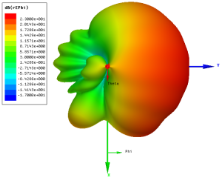
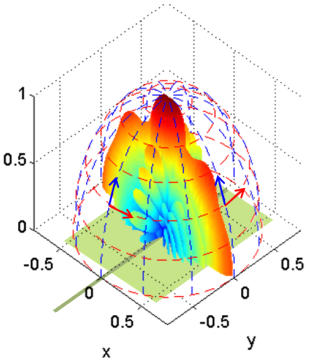
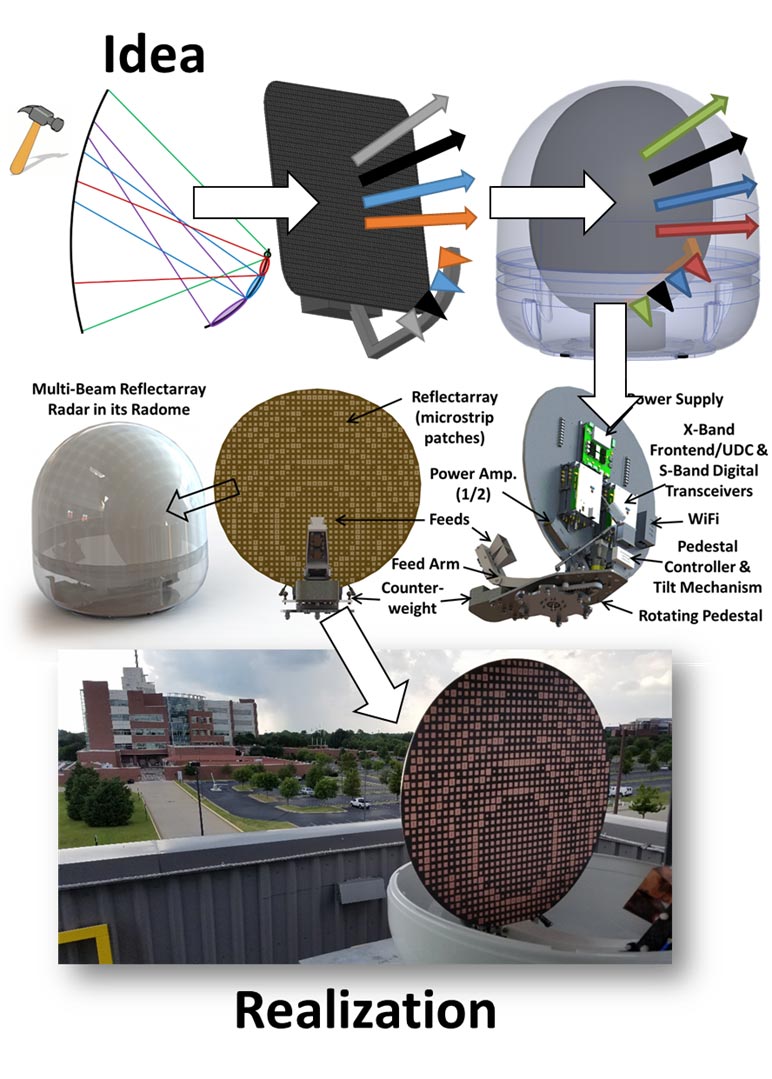
- Advanced digital architectures
- Adaptive & Reconfigurable transmission
- Low-C-SWaP
- System Reliability
- Expedited algorithm and supporting software design
- Boonleng Cheong
- Caleb Fulton
- Nathan Goodman
- Robert Palmer
- Jorge Salazar-Cerreño
- Mark Yeary
- Guifu Zhang
- Rockee Zhang
"The whole is greater than the sum of its parts." - Aristotle
Response: "The whole is not functional without its parts." - Sigmarsson
When it comes to radar and communications systems, the RF hardware represents a significant portion of the parts. Therefore, in order to advance the state-of-the-art system design, RF component research is very important. These include passive components such as attenuators, combiners, couplers, and filters and active components such as amplifiers, mixers, phase shifters, and switches. Currently there is a lot of focus on reconfigurable RF components for the next generation of agile, spectrum-efficient radio systems.
Research in the ARRC covers all aspects of RF component design leveraging advanced circuit theory and electromagnetics. Operating frequencies currently range from VHF up to W-band on platforms like traditional circuit boards such as laminates and ceramics. Additionally, semiconductor microfabrication allows for unique chip-scale designs. Examples of recent/ongoing RF-components-related projects include:
- Integrated filters/antennas (filtennas)
- RF phase shifters for antenna arrays
- Phase-change material RF switches
- Frequency selective surfaces (FSS)
- Advanced packaging techniques
- Multi-layer RF circuit boards
- High-efficiency amplifiers
- 3D printed components
- Reconfigurable filters
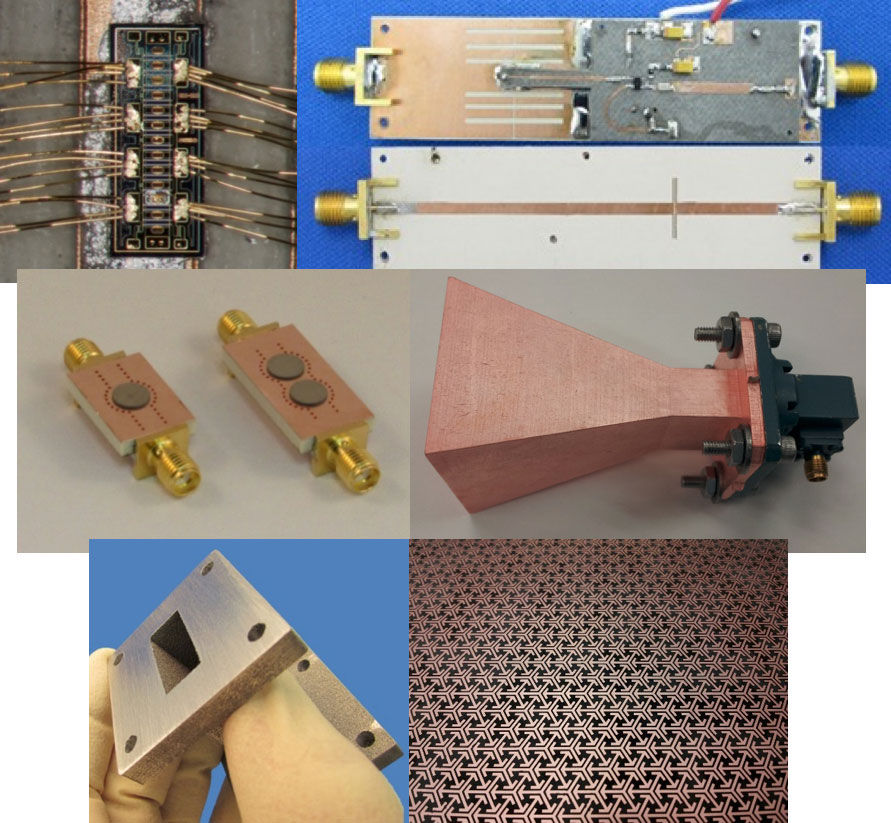
- Caleb Fulton
- Jorge Salazar-Cerreño
- Hjalti Sigmarsson
- Rockee Zhang
Building on a legacy of applied electromagnetics research centered around dish-based radar systems and radar cross-section (RCS) engineering, the ARRC is now focused on advanced antenna and wave propagation research for a variety of application spaces.
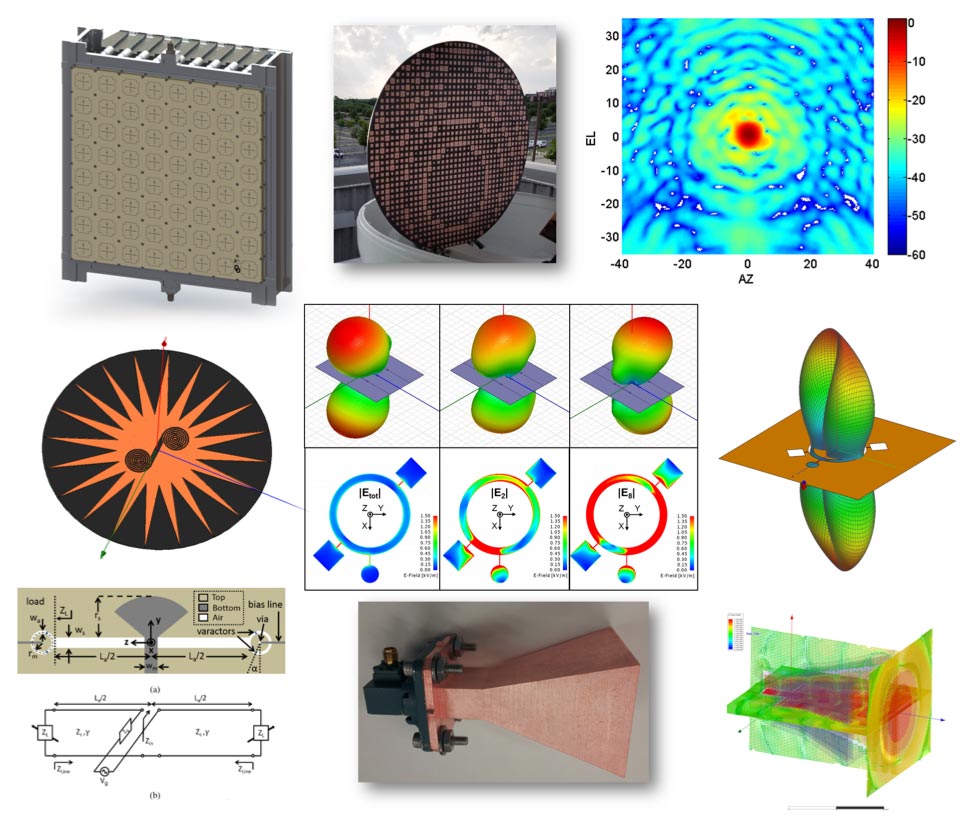
Modern radar systems make use of phased arrays, and emerging weather radar systems are additionally dual-polarized. Much of the ARRC's current research efforts are addressing engineering challenges with the marriage of these two technologies for weather spaces, while simultaneously pushing array-based technologies in general (including reflectarrays) for radar and communications applications.
At the same time, much of the ARRC's current applied electromagnetics research goes far beyond radar to include other applications and challenges. The spectrum crisis has spurred development of multi-function, multi-frequency, and ultra-wideband antennas to enable enhanced spectrum efficiency. ARRC researchers are developing antennas with frequency tunability and pattern reconfigurability that directly address the requirements of future, spectrally-diverse systems. Finally, the ARRC's numerous manufacturing and testing resources are increasingly enabling the rapid prototyping of previously unmanufacturable structures using additive manufacturing and multi-layered circuit board structures.
Some specific areas include:
- Dual-polarization phased array elements
- Novel calibration methods
- Reflectarrays
- Multi-band antennas, UWB antennas, tunable antennas, RFID
- Pattern reconfigurable antennas
- Wave propagation
- RCS engineering
- Caleb Fulton
- Jessica Ruyle
- Jorge Salazar-Cerreño
- Guifu Zhang
- Rockee Zhang
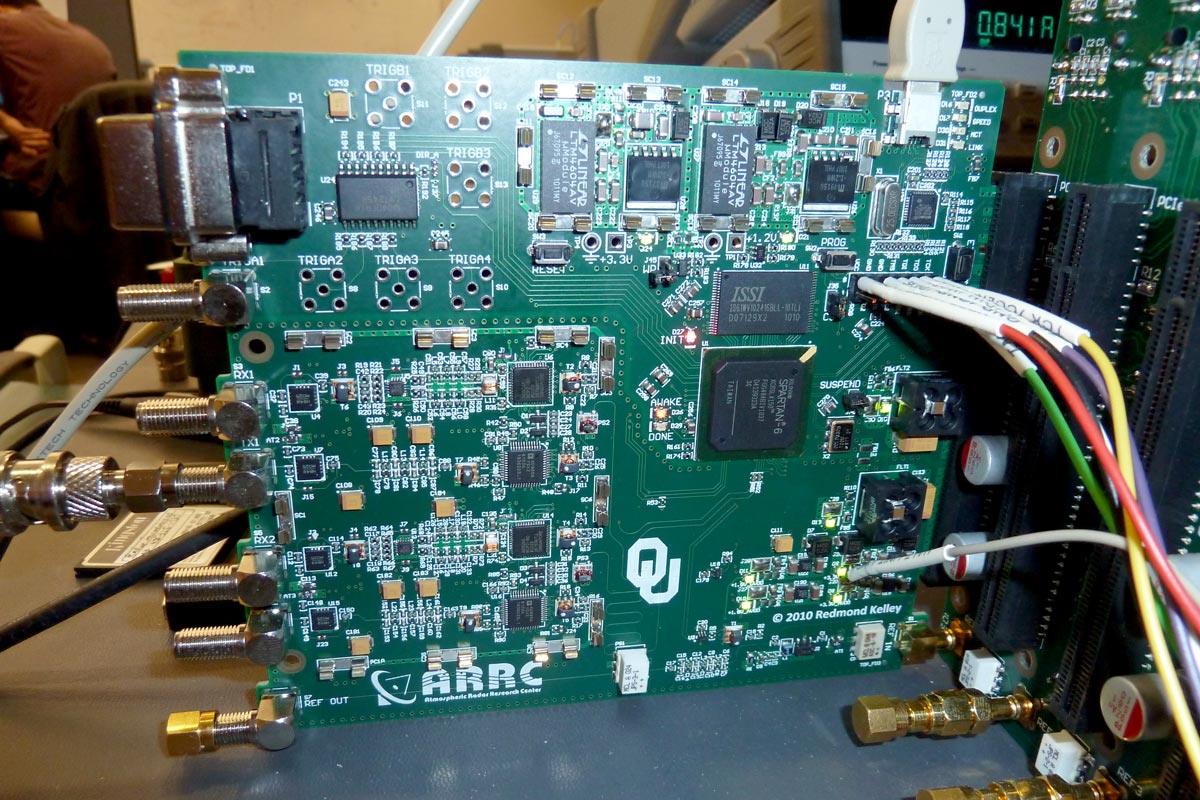
- Software-defined radar
- Custom digital transceivers
- Fully digital up/down conversion, polyphase filtering, decimation, etc.
- Low-latency data routing
- Real-time processing
- Boonleng Cheong
- Caleb Fulton
- Mark Yeary
- Rockee Zhang
Simulations: The available circuits and electromagnetics simulation tools include: ADS, ANSYS HFSS, CST, FEKO, and Microwave Office.
Fabrication: The RIL has in-house fabrication capabilities for creating multi-layer printed circuit boards. These capabilities include: circuit board plotting, lithography, thru hole plating, and pick-and-place. Rapid prototyping of electromagnetically functional components is achieved via metallized 3D printed parts, both using stereolithography and fused deposition modeling. Fixtures and larger parts are created in a machine shop. Finally, entire systems can be assembled and prepared for fielding in a high-bay assembly area.
Testing: The heart of the RIL consists of several anechoic chambers and measurement facilities. Far-field measurements down to 300 MHz and up to 50 GHz; planar, cylindrical, and spherical near-field scanning; environmental antenna testing, and direct mutual coupling measurements are available. Furthermore, the RIL contains a full range of the standard high-frequency measurement equipment from Keysight, Tektronix, Copper Mountain, and many others.
- Precision anechoic chambers
- High-bay integration facilities
- Environmental chamber for temperature cycle testing
- Machining, fabrication, and prototyping
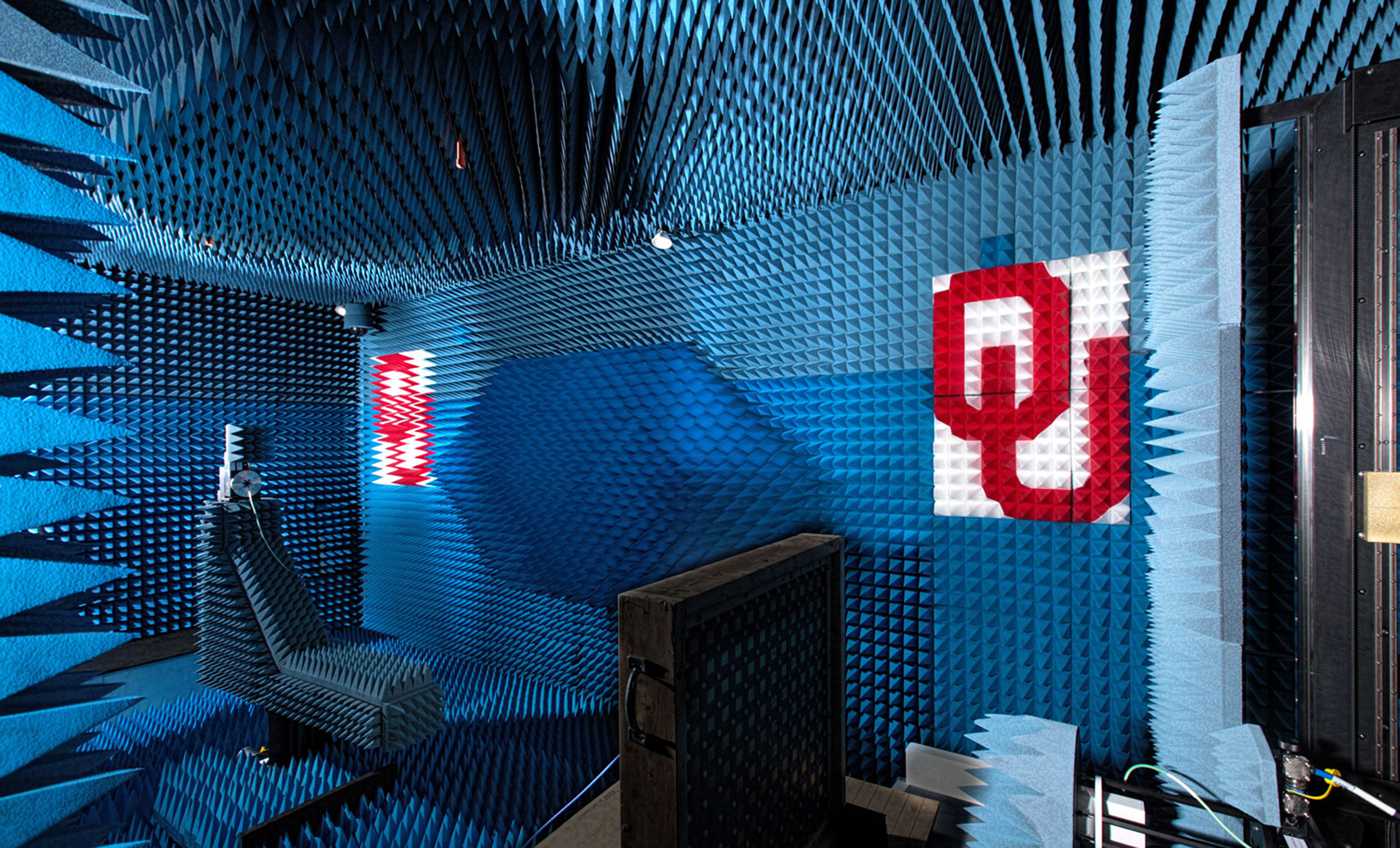
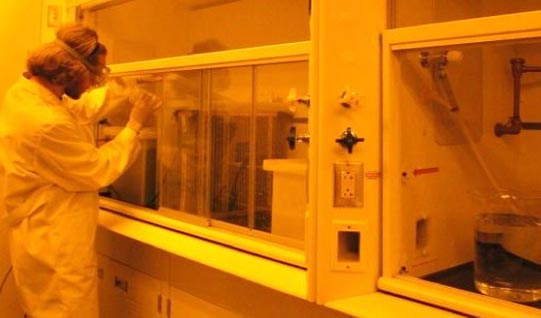
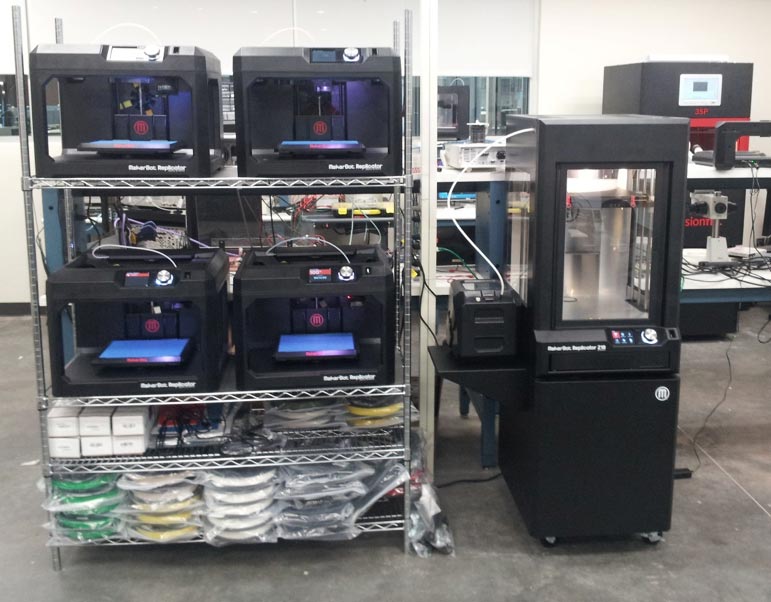
- Boonleng Cheong
- Caleb Fulton
- Robert Palmer
- Hjalti Sigmarsson
- Mark Yeary
- Guifu Zhang
- Rockee Zhang
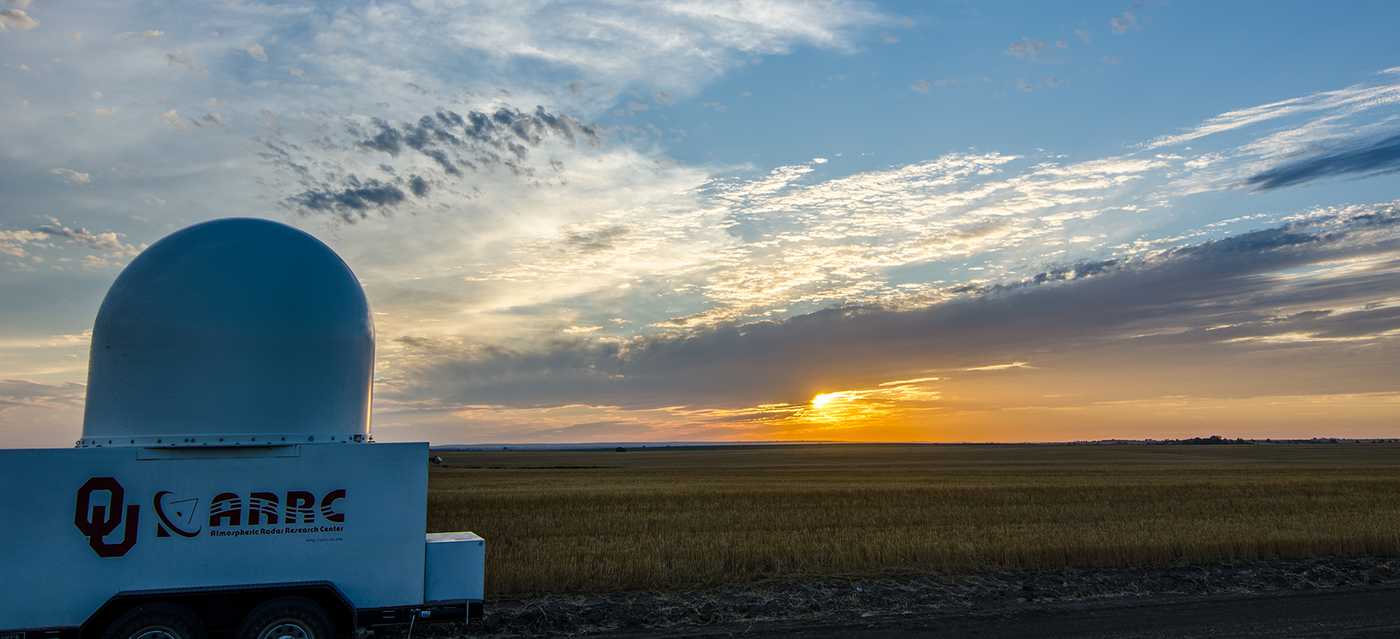
- Mobile weather radar
- Advanced phased array radar
- Airborne radar
- Stream radar for hydrological studies
- Michael Biggerstaff
- David Bodine
- Boonleng Cheong
- Caleb Fulton
- Pierre-Emmanuel Kirstetter
- Robert Palmer
- Mark Yeary
- Tian-You Yu
- Guifu Zhang
- Rockee Zhang
- Cognitive and adaptive radars
- Waveform design
- Physics-based radar simulation
- Multi-radar, multi-sensor fusion
- Adaptive array processing
- Fuzzy logic and neural networks
- Clutter mitigation
- SAR, ISAR and GMTI
- Digital pre-distortion
- Genetic optimization
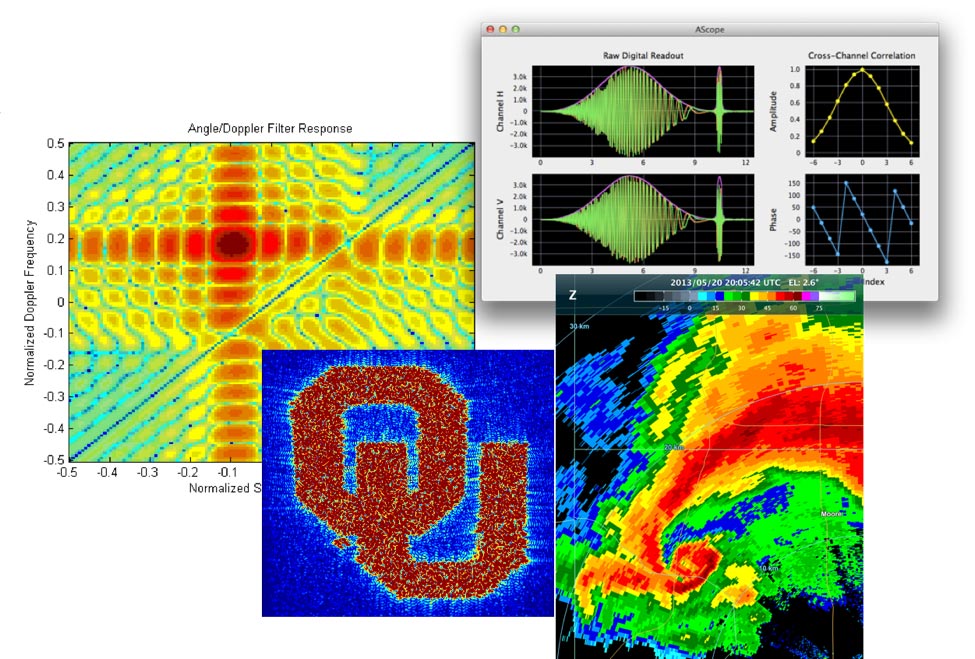
- Boonleng Cheong
- Caleb Fulton
- Nathan Goodman
- Robert Palmer
- Alexander Ryzhkov
- Sebastian Torres
- Mark Yeary
- Tian-You Yu
- Guifu Zhang
- Rockee Zhang
The vigorous development of radar technologies in the ARRC are driven not only by practical applications and needs, but also curiosity in fundamental science, engineering, and national safety. The ARRC applies its innovative systems and technologies to various fields of weather, climate, water, aeroecology, aviation, and DSI. The overarching goal of applying these technologies to the observation of natural and man-made hazards is to reduce their risk through better understanding of the phenomena, improved representation and data assimilation in numerical prediction models, and effective risk communication. Example topics include tornadoes and severe weather, radar hydrometeorology, climate and climatology, precipitation microphysics and dynamics, quantitative precipitation estimation (QPE) with ground-based, space-based radars, and multi-frequency radars etc.
Ensuring the safety and security of our nation comprises a multi-faceted radar challenge involving ever-changing technologies and strategies. The ARRC has expertise in DSI-related radar technologies including electronics and digital architectures for phased-array antennas, low-profile antenna design, novel materials for tunable circuits, adaptive radar measurement and processing, and other emerging radar system concepts. For instance, ARRC's portfolio includes dismount and slow-moving target detection, extremely wide-area search and track, target classification, high-resolution imaging, and exploitation of polarimetric radar.
- Tornadoes and other severe weather
- Radar hydrometeorology
- Climatology and climate
- Precipitation microphysics and dynamics
- QPE with ground-based and space-based radars
- Radar data assimilation and forecasting
- Natural hazard prediction and disaster risk
- Aeroecology
- Multi-frequency radars
- Dismount and slow moving target detection
- Extremely wide area search and track
- Target classification
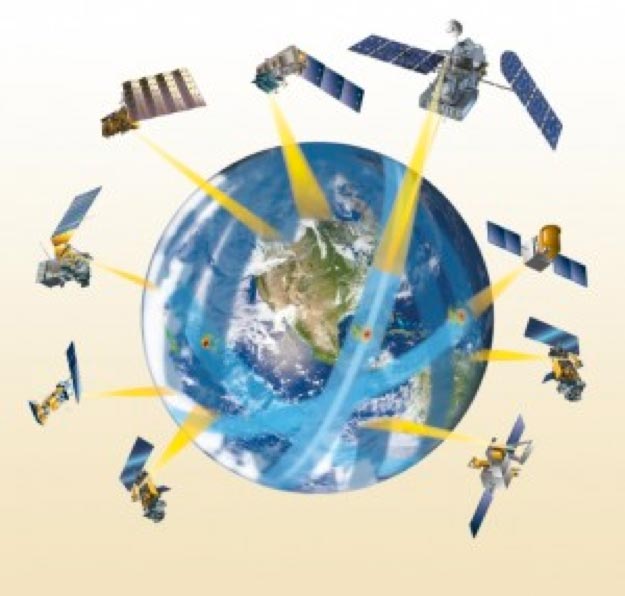
- Michael Biggerstaff
- David Bodine
- Boonleng Cheong
- Caleb Fulton
- Nathan Goodman
- Yang Hong
- Pierre-Emmanuel Kirstetter
- Robert Palmer
- Alexander Ryzhkov
- Mark Yeary
- Tian-You Yu
- Guifu Zhang
- Rockee Zhang
Click here for the ARRC Publications.
